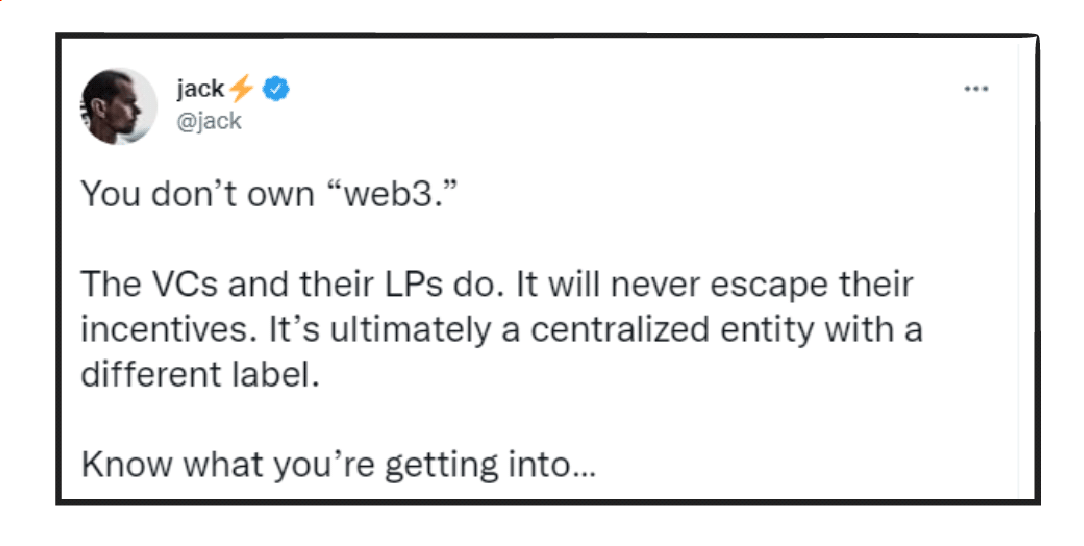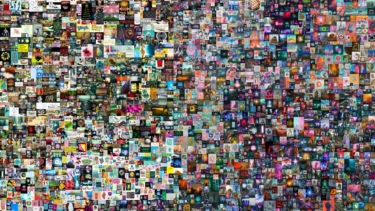When it comes to Web3, you’ll find people who love it, people who deny it’s “a thing”, people who are trying to define it, maximalists, minimalists, people who think it’s crucial, people who see it as an evolution, and people who are absolutely sure it’s a total revolution.
To make sense of this, Stefano Maggi, Regional Lead EU Area, Co-Founder & CEO Italy and Spain, explores the ins and outs of Web3, looking at its main traits, the aspects that make it relevant for communications, marketing, brands and the communities they interact with, as well as the pain points that need to be addressed, fixed or, in some cases, just avoided.
You can read the full post on our Mirror site here.
Define: Web3
First of all, let’s start with the big elephant in the room: what is Web3, really?
It’s the promise that the internet should be owned by the people taking part in it. Such promise is only theoretical now, and realised only in a small part. The first iteration of the web had the revolutionary trait of allowing people to find and get in touch with content, albeit passively.
Later on, something groundbreaking emerged: the ability for everyone to publish, to take part in a conversation, to connect to virtually every community in the world. That’s the core of the second iteration of the web, powered by social media.
The main concepts behind Web3 are ownership and identity. People can create and own digital assets in a totally unique way, and certify that status through a worldwide distributed ledger, called blockchain. Identity plays a big role in Web3 as well: the technologies that are at the core of Web3 allow people to build their personal and unique identities.
Blockchain as a bridge
The blockchain is – always in theory – an excellent tool to unite the physical world with something everyone talks about at the moment: the so-called “metaverse”, or a digital spatial representation of worlds in which people can interact with others.
The underlying philosophy of Web3 relies on a set of technologies that can change the way people think about their digital world. The principle of decentralisation is key; nothing should rely on one single node, company, service, but everything should be distributed across the participants. This would in theory limit the power of big technology companies, shifting it into the hands of people.
It’s a change that allows for a new way for ideas to come alive, for people to organise, to cooperate and to invest. DAOs (distributed autonomous organisations) and NFTs, the hot word of the moment, (non-fungible tokens) are the most advanced and concrete examples of decentralisation in action. Why do NFTs look like they do? It’s a topic that Lore Oxford has been exploring, and it has a lot to do with semiotics and two tensions: playful vs. provocative and sincere vs. satyrical.

Enter brands
As it often happens, when communities of passionate people come together around a topic, brands start thinking about how they can be part of the conversation and this is true in the case of Web3. There are, though, specific cases in which it makes sense for brands to participate. First of all: is the brand’s participation relevant for the target audiences? Can it be an addition to people’s identity in Web3? Maybe in the metaverse, through digital crypto assets?
With Web3, the idea of owning a product is brought to entirely new levels. Just like passionate fans can buy physical products, they can own the digital counterpart, collect it, trade it and use it to define part of their identity.
We’ve seen many interesting launches in this direction, from Coca-Cola selling unique NFT art to fans, to Dolce & Gabbana introducing an original NFT collection, to adidas launching the “Into the Metaverse” collection together with crypto brands and influencers like Bored Ape Yacht Club, PUNKS Comic, and gmoney. And countless other actions. Some have been innovative and meaningful for their communities, others have been nothing more than an attempt at a PR opportunity on a hot topic.
It appears that every time a brand action in the crypto space is successful, it’s founded on a deep knowledge of the community it refers to. Sometimes the community becomes a brand itself (think Bored Ape Yacht Club), and partnering with it becomes an extremely smart move to connect to the people who are its stakeholders.
Crypto and NFTs also offer a new take on loyalty and advocacy. People who own an NFT of a product often have a strong vested interest in making it successful. They’d want other people to want it, to consider it worthwhile and to invest in it. From this point of view, the concept of advocacy evolves to a whole new level and incorporates a transactional element that would make the owner an active promoter of the crypto object as well as the project it’s connected with.
What’s the ideal situation for a brand to build a Web3 project?
- The brand is digital savvy and the community expects it to experiment with new technologies.
- The audience is interested in using NFTs and crypto.
- The community is passionate about the brand or its main focus.
- It’s possible to create scarcity around the ownership of an asset.
Loyalty through additional benefits feels natural (premium experiences, recognition, close access to a community).
What needs to be fixed?
Web3 is still in its infancy, with many pain points and critical areas that need to be fully developed or changed for this space to be a relevant place for people to connect with brands. There are five main areas that need attention and should be brought to the next level: trust, integrity, safety, sustainability, and accessibility. Let’s see them in practice, and how they can be tackled.
Trust: Identity on the blockchain is explicit and hard to fake. On the one hand, there’s no guarantee of a link between someone’s wallet and their core identity. On the other hand, there’s no real safeguard for everyone who wants to invest in a project. Scam communities can drain a lot of economic resources, and crypto fraud crimes are rising.
Brands should protect their communities by putting in place tools to monitor transactions, being informative and educational in some advanced cases, and setting rules that make joining communities and purchasing as transparent as possible.

Integrity: Many crypto enthusiasts, players, and pioneers claim that they are free and independent, as are many Web3 technologies. That is true in theory, but in reality many of the main projects in this space are initiated and backed by VCs, just as it has always been for “web2” companies. There’s nothing wrong with that, VCs and LPs can have an enormous impact accelerating the adoption of new technologies.

By the way, it’s useful to dismiss the “free and independent” argument, as it might be incoherent with how crypto projects play out and are funded.
Decentralisation is another mantra of Web3. And it’s a very crucial piece in the theoretical foundation of this movement. If you look at how dApps (decentralised apps) work, you’ll find that most of them connect to the blockchain via two companies: Infura and Alchemy. Also, the biggest NFT marketplace, OpenSea, doesn’t store the actual NFT on blockchain, but rather its URL, acting as a middleman between the buyer, the content, and the sellers. Absolutely nothing wrong with it; quite the opposite: it grants more security and control, but it’s helpful to know.
It’s important for brands to acknowledge this status and distance themselves from some of the core crypto arguments, especially when they can be understood as false claims and especially when experimenting with solutions that have such a strong emotional element for their communities, like collectors products or loyalty programs.
Big tech is becoming part of this movement as well. Twitter is introducing support for NFT profile pictures as part of its Twitter Blue program, while Facebook, Instagram (and Meta in general) are getting closer to crypto technologies with plans to make, sell and showcase NFTs, and Google is forming a blockchain group.
Safety: Regulation is not easy for technologies like crypto. They’re cross-nation and fairly distributed: it can be hard to pinpoint a “headquarters”, so jurisdiction is not easy to define. The lack of an oversight entity (private or public) makes it impossible to have support in case a user is scammed in any way. Another challenge comes with media; the more atomised it becomes, the more difficult it is to set rules and enforce them. It’s hard to control all of the potential downsides of distributed media, when there’s no access to a single means of distribution.
Brands will need to study very carefully the communities and the spaces in which they thrive before contributing. Part of the solution can come by associating Web2 solutions with Web3 technologies. Think about one of the main platforms of choice for Web3 community conversation: Discord. Definitely a Web2 company, it has many feature that help it interface with web3 and blockchain, while keeping a degree of control on what happens in the groups where people meet.
Sustainability: There are many potential downsides of Web3 when it comes to sustainability. Many of them are dependent on the lack of maturity of the solutions. Firstly, the transactional nature of Web3: when every action can be incentivized economically, it’s easy to tie everything exclusively to a functional approach. Brands need to find a balance between the economic incentive (people can profit from buying and selling products as well), and the emotional side of belonging to a community. This can translate into how people see their world and its possible extension to the metaverse, and especially the role of money in it.
Many gaming communities are against NFTs, because they’re often seen just as another way to monetise participation through in-game purchases that don’t add to the main gaming experience. “Skeptics argue that cryptocurrencies and related assets like NFTs are digital Ponzi schemes, with prices artificially inflated beyond their true value. Some question whether cryptocurrencies and the blockchain, which are slippery concepts, have any long-term utility”, wrote By Mike Isaac and Kellen Browning in a brilliant article on The New York Times.
Another element of inequality arises in many projects when access is granted to a priority list. In these cases, people who are granted early access get better conditions. Just like it happens in the “world” that many crypto enthusiasts say they are revolutionising. Brands should try and oppose these dynamics when opening up to communities and dropping NFTs or giving access to specific goods. It requires effort, but it’s a great way to contrast the natural tendency to inequality that is often caused by the dynamic of “drops”.
There’s also environmental sustainability to take into consideration. It’s very interesting to see new protocols come up that are more efficient in the way they use energy, but at the moment CO2 emissions from mining are significant, and a small part of the energy used comes from renewable sources (39% in November 2021). There’s hope, though, and soon we’ll likely see improvements in that area, also thanks to shifts to new technologies and protocols, like – for instance – “proof of stake”.
Accessibility: Another important area. Today there are 80+ million wallets worldwide. Compared to 4.95 billion social media users, it’s immediately clear that we’re talking about a niche. The learning curve is pretty steep to take part in the most complex initiatives. People don’t want to run servers, as highlighted by Moxie Marlinspike. Many of the actions on Web3 today require some level of technical skill that’s clearly above average (especially considering the access level for social media in comparison).
Brands and platforms should work together to build experiences that are accessible to and understandable for everyone, to make them as inclusive as possible and broaden their impact.
Love it or hate it. Web3 is here to stay.
There’s a lot to do to make it more inclusive, more open, more decentralised and to allow people to have more ownership, but we’re on a new and exciting path when it comes to Web3. It’s a work in progress, yet the whole space is expected to evolve quickly. If the last few months is anything to go by, the pace in which things can develop indicates a step in the right direction.
As we navigate this new space, brands have the opportunity and in some cases the responsibility to lead their communities through it.
